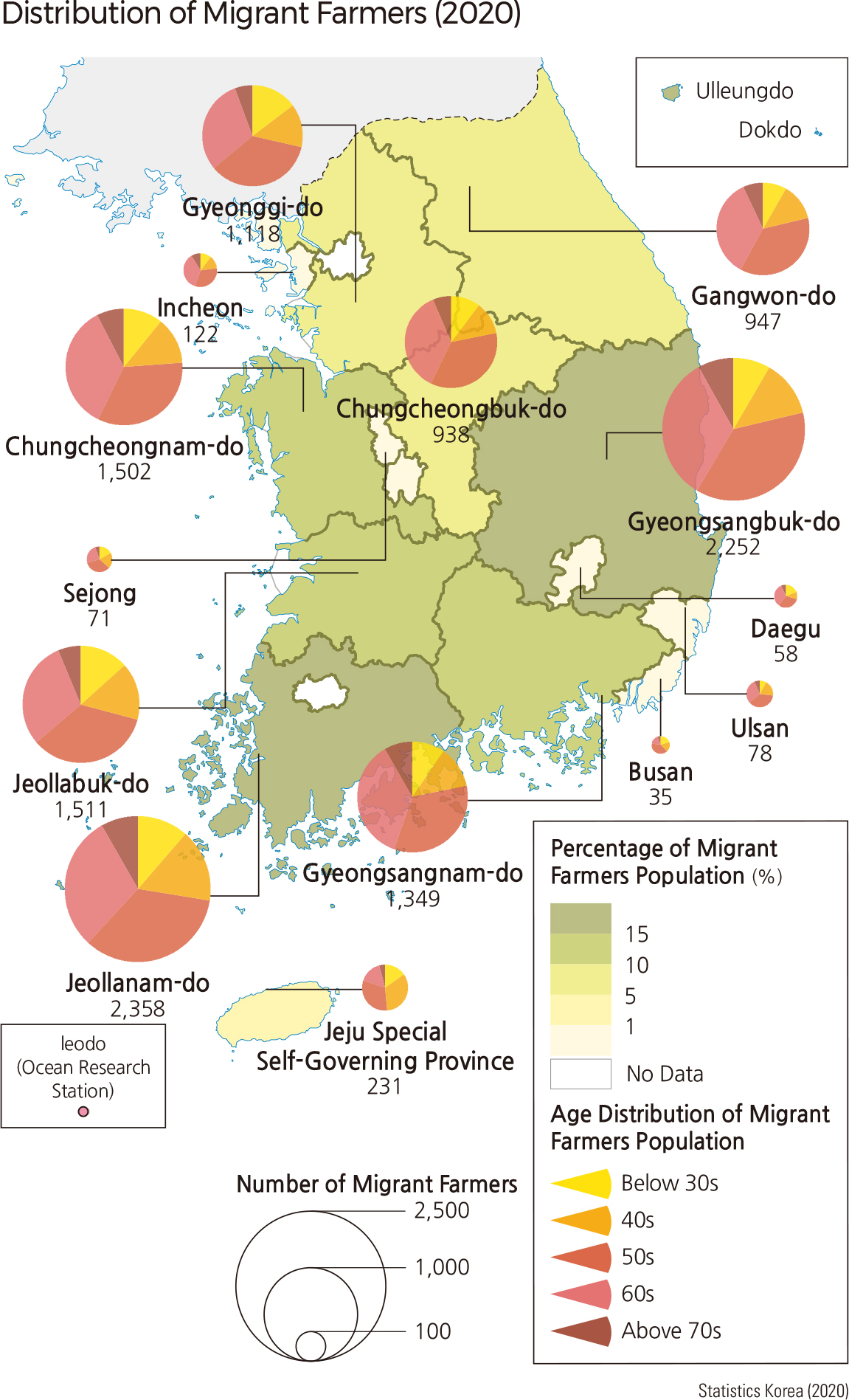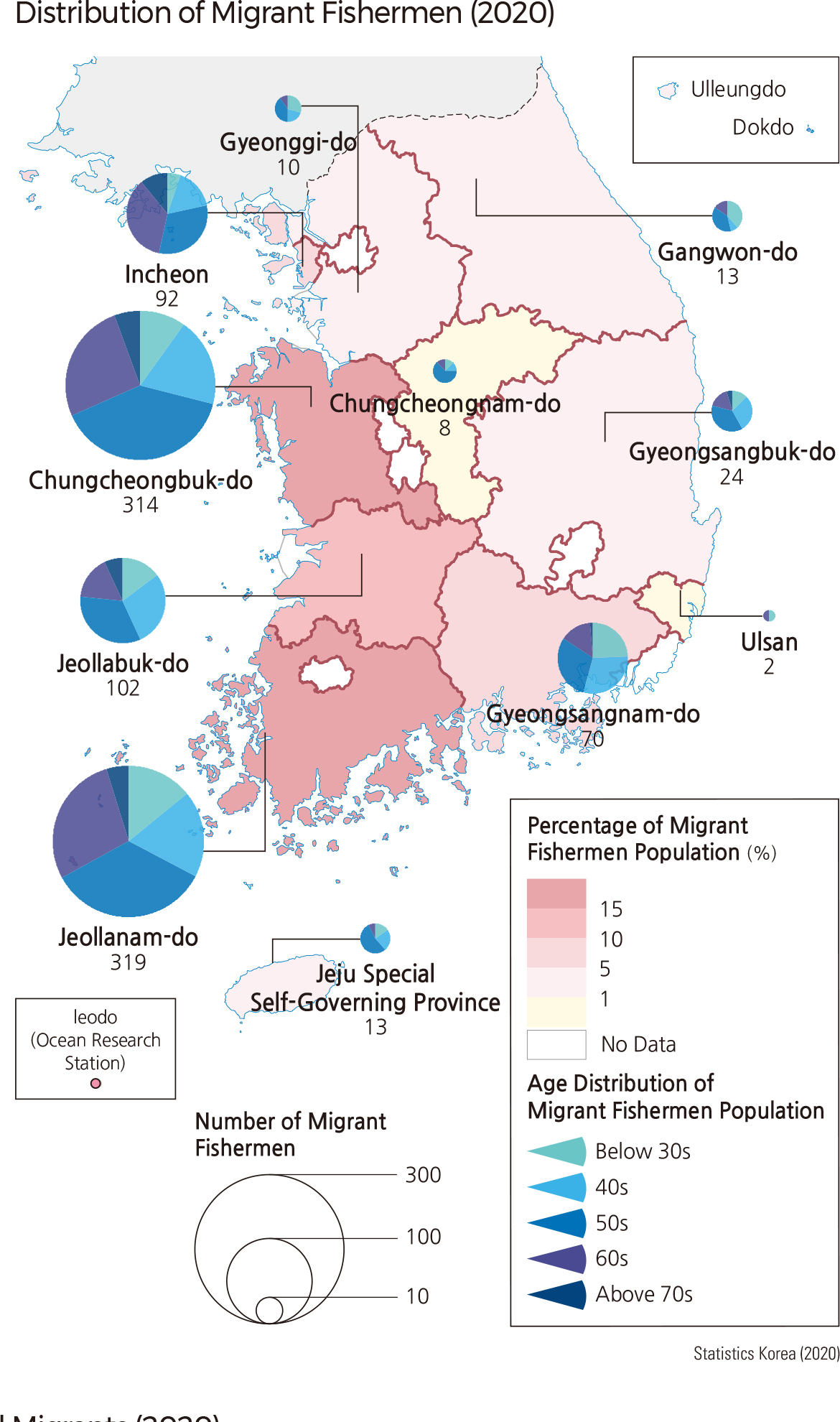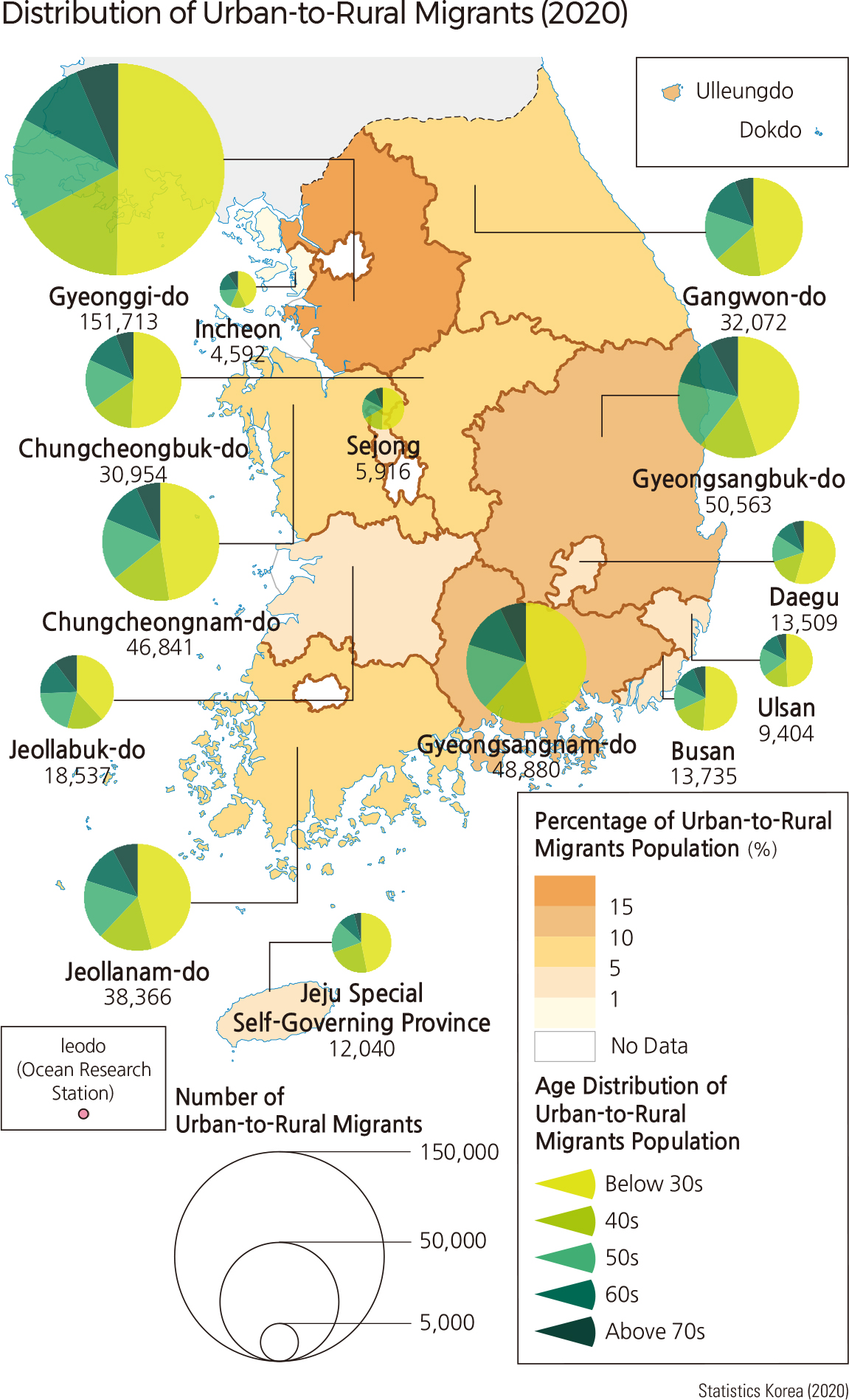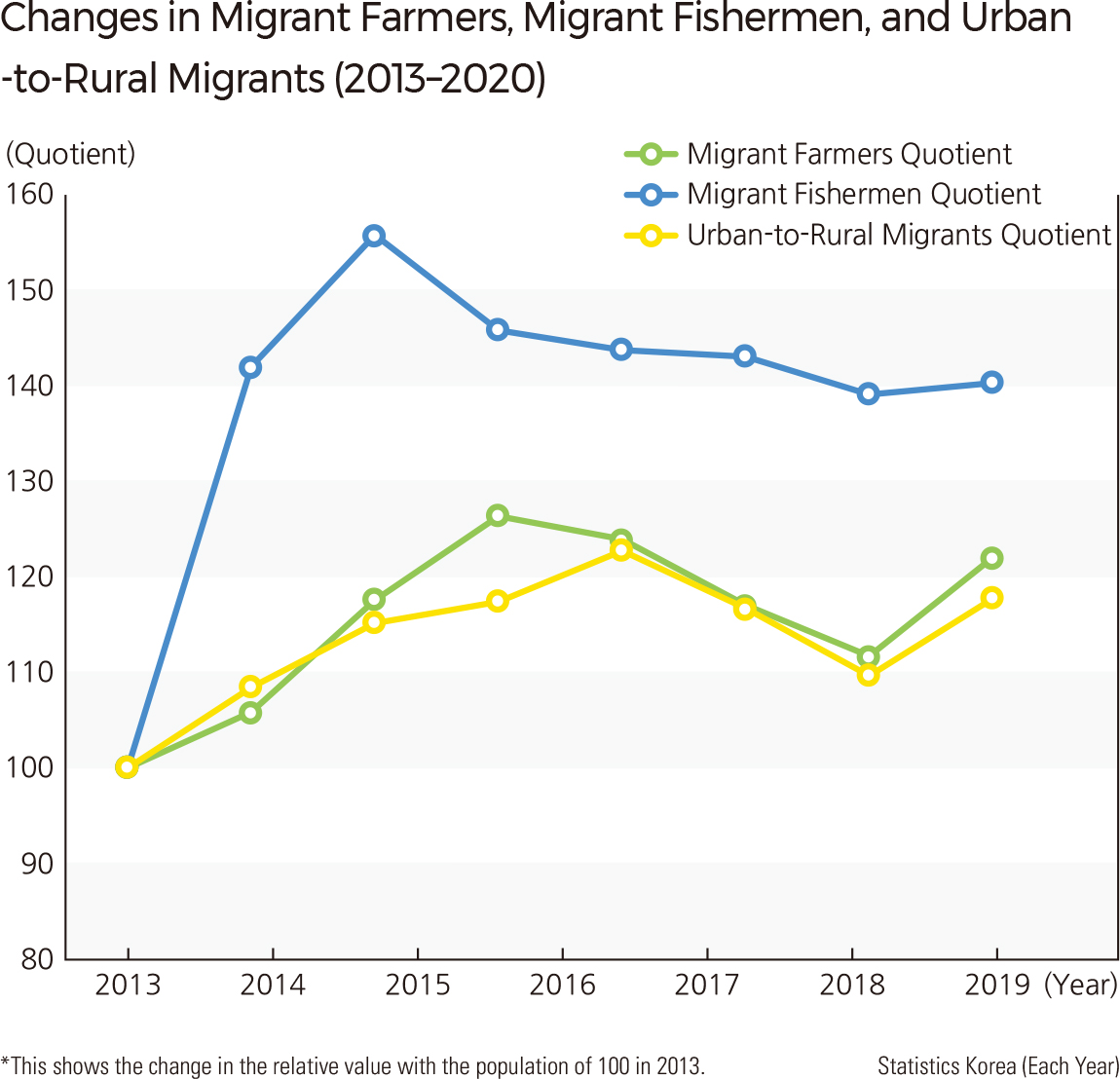English III 2021
According to the following conditions, a person who had lived in -dong area for more than one year and migrated to -eup or -myeon areas during the period under investigation is classified into migrant-farmers, migrant-fishermen, and urban-to-rural migrants. ‘Migrant-farmers’ is defined as a person who is registered in the Agricultural Ledger or the Registration Lists of Agricultural Business Entities or the Registration Lists of Livestock Business to participate in agricultural activities during the period under investigation. ‘Migrant-fisherman or woman’ is defined as a person who is registered in the Fishing Ledger or the Registration Lists of Fishing Business Entities or the Registration Lists of Fishing Business to participate in fishing activities during the period under investigation. ‘Urban-to-rural migrants’ is defined as the rest of the population, except for students, soldiers, temporary job mobility, migrant-farmers, and migrant-fishermen. The percentage of migrant farmers by region in 2020 was the highest in Jeollanam-do (18.8%), followed by Gyeongsangbuk-do (17.9%), Jeollabuk-do (12.0%), and Chungcheongnam-do (11.9%). The percentage of migrant fishermen by region in the same year was the highest in Jeollanam-do (33.0%), followed by Chungcheongnam-do (32.5%), Jeollabuk-do (10.5%), and Incheon (9.5%). Moreover, the percentage of urban-to-rural migrants by region in the same year was the highest in Gyeonggi-do (31.8%), followed by Gyeongsangbuk-do (10.6%), Gyeongsangnam-do (10.2%), and Chungcheongnam-do (9.8%). The composition rate of the departure region in migrant farmers was the highest in Gyeonggi-do (20.4%), followed by Seoul (15.6%), Kwangju (8.3%); among them, the proportion of the Seoul Metropolitan Area (Seoul, Incheon, and Gyeonggi-do) in the total departure region was 41.5% (5,212 people). The composition rate of the departure region in migrant fishermen was the highest in Gyeonggi-do (24.1%), followed by Incheon (15.9%), Seoul (14.2%); among them, the proportion of the Seoul Metropolitan Area in the total departure region was 54.2% (524 people). Moreover, the composition rate of the departure region in urban-to-rural migrants was the highest in Gyeonggi-do (25.5%), followed by Seoul (14.4%), Gyeongsangnam-do (7.3%); among them, the proportion of the Seoul Metropolitan Area in the total departure region was 44.2% (211,079 people). |




